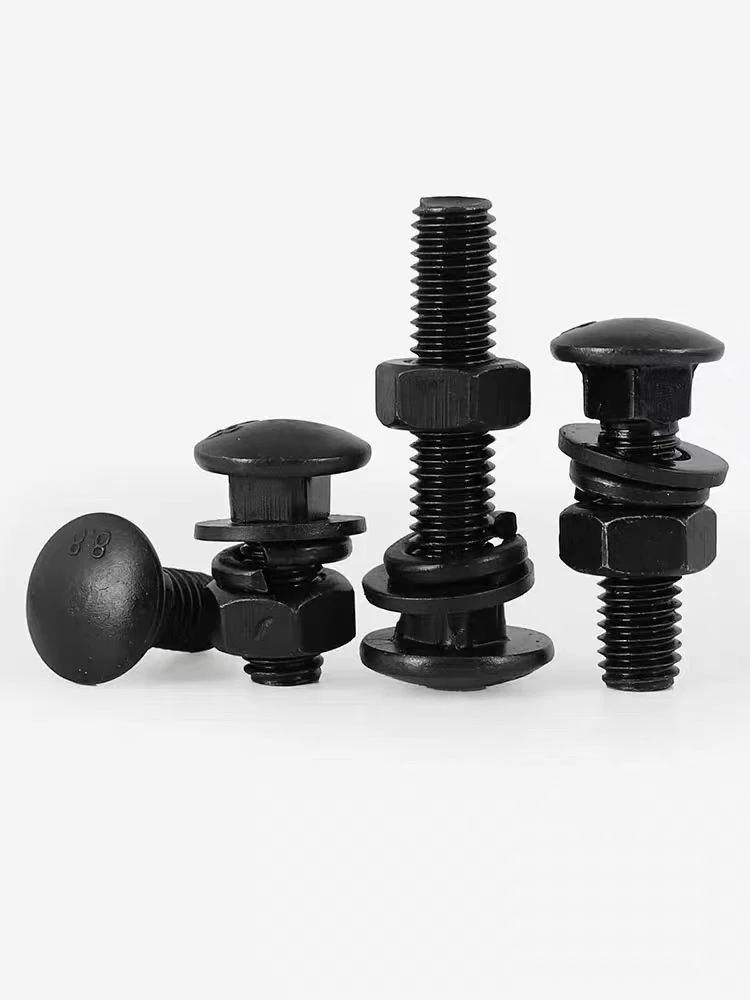

Understanding the Specifications and Applications of M30 Stud Bolts in Engineering
Dec . 04, 2024 10:27 Back to list
Understanding the Specifications and Applications of M30 Stud Bolts in Engineering
Understanding M30 Stud Bolts Applications, Specifications, and Benefits
In the realm of mechanical engineering and construction, fasteners are critical components that ensure stability, strength, and reliability in various structures. Among the multitude of fasteners available, the M30 stud bolt stands out due to its unique characteristics and wide range of applications. In this article, we will delve into the specifications, applications, and advantages of M30 stud bolts, providing a succinct overview of this essential engineering element.
What is an M30 Stud Bolt?
An M30 stud bolt is a type of fastener characterized by its metric diameter of 30 millimeters. The “M” denotes that it follows the metric thread system. Stud bolts typically have threads on both ends and are often used in conjunction with nuts. They can be found in various lengths, allowing for flexibility depending on specific applications and might feature different grades of strength based on the materials used in their manufacturing.
One significant aspect of M30 stud bolts is the material from which they are made. They are generally composed of high-tensile steel, stainless steel, or alloy steel, which enhances their performance in demanding conditions. The choice of material often depends on the environment in which the stud bolts will be used, as some environments expose fasteners to corrosive elements.
Specifications of M30 Stud Bolts
Stud bolts come with various specifications, as governed by industry standards such as ISO, ASTM, and DIN. Typically, an M30 stud bolt will have characteristics including
1. Thread Type The threads can be coarse or fine, with coarse threads being more common for most heavy-duty applications. The pitch of the threads—distance from one thread crest to the next—is specified as well. 2. Length Standard lengths for M30 stud bolts vary depending on the application, often ranging from 100 mm to 600 mm.
3. Strength Grades Stud bolts are categorized into different grades based on their tensile strength. Common grades include 8.8, 10.9, and 12.9 for high-tensile steel, while stainless steel options may include grades such as A2 and A4 which offer excellent corrosion resistance.
4. Surface Treatment Various coatings can enhance the properties of M30 stud bolts, including galvanized finishes for corrosion resistance or black oxide for aesthetic appeal.
Applications of M30 Stud Bolts
M30 stud bolts are widely used across multiple industries due to their strength and adaptability
. Some common applications includem30 stud bolt

1. Construction In the construction industry, M30 stud bolts are essential for structural connections, securing beams, and anchoring elements in buildings and bridges.
2. Manufacturing Heavy machinery and equipment rely on M30 stud bolts for securing components together and maintaining structural integrity.
3. Oil and Gas With their ability to withstand high pressures and corrosive environments, M30 stud bolts are frequently used in pipeline systems and drilling rigs.
4. Marine Given their robust construction, M30 stud bolts find applications in shipbuilding and maritime infrastructure, where they can resist harsh weather conditions.
Benefits of M30 Stud Bolts
The strategic use of M30 stud bolts offers multiple advantages
1. Strength and Durability M30 stud bolts are designed to handle substantial loads, making them suitable for heavy-duty applications.
2. Ease of Installation The dual-threaded design simplifies installation, allowing for quicker assembly with nuts on both ends.
3. Versatility Available in a range of lengths and materials, M30 stud bolts can be customized for diverse applications across industries.
4. Corrosion Resistance By utilizing stainless steel or treating the surface, M30 stud bolts can effectively resist deterioration, which is crucial in hostile environments.
Conclusion
M30 stud bolts are a quintessential fastener choice, renowned for their strength, versatility, and reliability across various industries. Understanding the specifications and applications of these fasteners is crucial for engineers and construction professionals alike, as their performance can significantly impact the integrity of structures and machinery. As technology advances and engineering demands evolve, the importance of such essential components will only continue to grow.
Latest news
-
High-Strength Hot Dip Galvanized Bolts - Hebei Longze | Corrosion Resistance, Customization
NewsJul.30,2025
-
Hot Dip Galvanized Bolts-Hebei Longze|Corrosion Resistance&High Strength
NewsJul.30,2025
-
High-Strength Hot-Dip Galvanized Bolts-Hebei Longze|Corrosion Resistance&High Strength
NewsJul.30,2025
-
Hot Dip Galvanized Bolts-Hebei Longze|Corrosion Resistance&High Strength
NewsJul.30,2025
-
Hot Dip Galvanized Bolts - Hebei Longze | Corrosion Resistance, High Strength
NewsJul.30,2025
-
High-Strength Hot Dip Galvanized Bolts-Hebei Longze|Corrosion Resistance, Grade 8.8
NewsJul.30,2025

